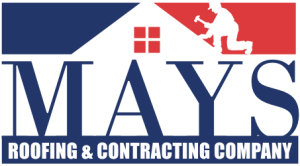

A visual guide to seasonal DIY roof inspections.
Article Sponsored by:
Mays Contracting is more than just a roofing company; it’s a family legacy built on trust and quality. Founded in 1979, we’ve been serving the community for over four decades. Our story began with a simple vision: to provide exceptional roofing services for both residential and commercial properties. This vision has guided us ever since, as we’ve grown from a small, family-run operation to a trusted name in the industry.
Regular roof inspections are vital for maintaining the integrity of your home. Seasonal changes can put your roof under stress, making it essential to understand how to inspect it effectively throughout the year. A well-configured DIY roof inspection routine predominantly enhances your roof’s lifespan and protects your investment. This article outlines a step-by-step guide for conducting seasonal roof inspections effectively.
Roof inspections enable homeowners to detect issues early, potentially saving substantial amounts on repair costs later. Each season presents unique challenges that can impact your roof’s condition. By scheduling a regular inspection routine, you ensure that your roof remains in optimal condition, regardless of the weather.
Spring is an excellent time to inspect your roof for winter damage. The melting snow can reveal underlying issues that may have gone unnoticed.
Spring inspections set the stage for necessary repairs, enhancing your roof’s durability going into summer.
Summer offers a unique opportunity to keep your roof cool by ensuring ventilation and sunlight exposure are optimal.
Addressing these aspects in summer guarantees your roof can withstand the intense sun and heat.
As leaves begin to fall, it’s crucial to prepare your roof for winter conditions.
Fall inspections help secure your roof heading into the harsh elements of winter, safeguarding your home effectively.
During winter, inspections can be challenging, yet they are equally important. Snow accumulation and icy conditions can hide underlying problems.
Winter inspections provide critical insights into how your roof is handling the season’s demands.
Regardless of the season, follow these steps for a thorough roof inspection:
Conduct a thorough visual inspection of the roof. Look for any visible issues such as sagging, missing shingles, or discoloration. Using binoculars from the ground level can also provide a clear view without risking safety.
Inspect specific areas closely:
After completing the inspection, document your findings. Take photographs of any problematic areas and note them for further reference. This documentation can be invaluable for repair planning or insurance considerations.
After a DIY inspection, there may be instances when professional assistance is required. Signs such as significant shingle curling, extensive ice dam formations, or any form of structural sagging should prompt a consultation with a roofing expert.
Creating a DIY roof inspection routine for every season enhances the longevity and health of your roof. By following a structured inspection plan, you can identify problems early, mitigate potential damages, and save on costly repairs. Remember, preventive action is essential in maintaining the integrity of your home. Regular inspections will give you peace of mind, knowing that your roof is prepared to face the elements of each season.

Quality Roof Construction and Repair in Lexington, Richland, Newberry and Laurens Counties for over 40 Years.
News Summary The University of South Carolina mourns the loss of Nathanial 'Nate' G. Baker,…
News Summary As wildfires continue to burn across North and South Carolina, officials have declared…
News Summary Dr. Edward Simmer's nomination to lead the South Carolina Department of Public Health…
News Summary In a notable legislative move, South Carolina lawmakers have introduced bills aimed at…
News Summary Raleigh, North Carolina has been recognized as the best-performing large city in the…
News Summary Sustain SC warns that South Carolina could face an economic loss of up…